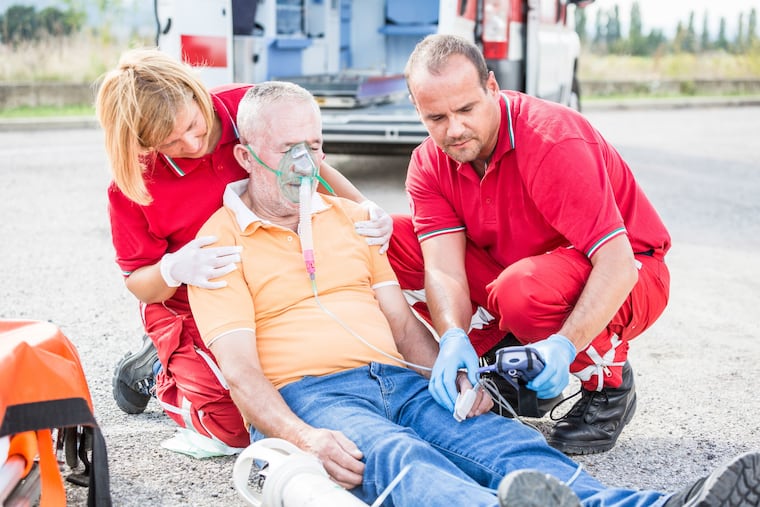Q&A: Heart attack care is a coordinated effort
Being cared for at a hospital with a full range of cardiac surgery capabilities for treating a heart attack is crucial to survival and how fast the patient gets medical intervention plays a key role in the patient’s survival and quality of life.

Q: What role do bystanders, paramedics, and doctors play when a heart attack happens?
A: If you suspect someone is having a heart attack, as a bystander you become essential to his or her chances of survival. Ask the person if he or she is feeling symptoms including pressure, tightness, pain in the chest or arms; nausea or abdominal pain; shortness of breath; cold sweat; fatigue or sudden dizziness. If the answer is, yes, call 911 immediately.
Paramedics arrive on scene, confirm the symptoms, obtain a medical history and perform an electrocardiogram (EKG) to determine if it is a heart attack. The EKG results go directly to emergency medicine doctors, who confirm the diagnosis and activate the hospital’s cardiac catheterization team. Those doctors provide additional medical-care orders to the paramedics by phone.
The first stop at the hospital is the emergency department (ED), followed by the cardiac catheterization laboratory. There we can perform a cardiac angiogram to view the blocked coronary artery that is obstructing blood flow to the heart. We might open the blockage with balloon angioplasty and/or an expandable tube, called a stent. During the procedures, we maintain the person’s normal blood pressure and heart rate with medications. Alternatively, we can connect mechanical assist devices that partially or completely take over the heart’s pumping function.
Being cared for at a hospital with a full range of cardiac surgery capabilities for treating a heart attack is crucial to survival. How fast the patient gets medical intervention plays a key role in the patient’s survival and quality of life. The angioplasty needs to happen within less than 90 minutes after arriving at the hospital.
Another surgical procedure to treat heart attack is coronary artery bypass surgery. It is performed for two main reasons: to improve survival and/or to relieve symptoms. Other key factors are the location and number of the blockages in the heart and whether the severity compromises blood flow to the heart muscle.
During bypass surgery we take a section of a healthy blood vessel from the chest or leg. We connect one end to the aorta and the other end to the blood vessel with the blockage in it. This reroutes the flow of blood and allows blood to reach the heart muscle, bypassing the blockage.
A blockage in the left main heart artery is typically an indication for bypass surgery. Bypass has been proven to improve a person’s survival. It has also been shown to be effective if a person has significant blockages in three major blood vessels providing blood to the heart.
Bypass surgery might also be an option when a patient is having intolerable angina symptoms (chest pain) due to a blockage and the pain cannot be relieved or controlled with medication.
Burak Arkonac, M.D., MHA, is an invasive cardiologist and medical director of invasive cardiology and Vincent Lotano, M.D., is a cardiac and thoracic surgeon and medical director of thoracic surgery. Both are located at AtlantiCare Regional Medical Center in Pomona, N.J.